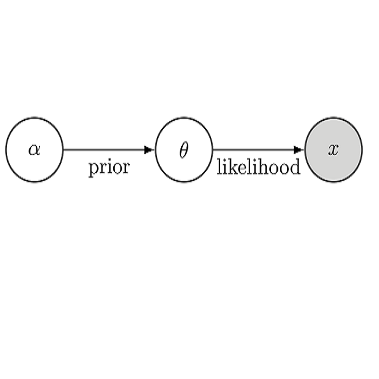Children's early speech often bears little resemblance to adult speech in form or content, and yet caregivers often find meaning in young children's utterances. Precisely how caregivers are able to do this remains poorly understood. We propose that successful early communication (an essential building block of language development) relies not just on children's growing linguistic knowledge, but also on adults' sophisticated inferences. These inferences, we further propose, are optimized for fine-grained details of how children speak. We evaluate these ideas using a set of candidate computational models of spoken word recognition based on deep learning and Bayesian inference, which instantiate competing hypotheses regarding the information sources used by adults to understand children. We find that the best-performing models (evaluated on datasets of adult interpretations of child speech) are those that have strong prior expectations about what children are likely to want to communicate, rather than the actual phonetic contents of what children say. We further find that adults' behavior is best characterized as well-tuned to specific children: the more closely a word recognition model is tuned to the particulars of an individual child's actual linguistic behavior, the better it predicts adults' inferences about what the child has said. These results offer a comprehensive investigation into the role of caregivers as child-directed listeners, with broader consequences for theories of language acquisition.
翻译:儿童早期的演讲往往与成人在形式或内容上的言论很少相似,然而照料者往往发现幼童的言语表达方式的意义。确切地说,照料者如何能够做到这一点,仍然不能很好地理解。我们提议,成功的早期沟通(语言发展的基本组成部分)不仅取决于儿童日益增长的语言知识,而且取决于成年人的复杂推理。我们进一步建议,这些推论最符合儿童说话方式的细微细节。我们用一套基于深层次学习和巴耶斯语推论的口头识别候选计算模型来评估这些想法。我们发现,在成人用来理解儿童理解的信息来源方面,更接近于相互竞争的假设。我们发现,最优秀的早期沟通模式(根据成人对儿童讲话解释的数据集进行评估),是那些以前对儿童可能想要的交流有强烈期望的模式,而不是儿童说话的实际内容。我们进一步发现,成人行为最适合具体儿童说话的方式:一个更接近的词识别模型是针对儿童理解儿童实际语言行为的具体细节。我们发现,这些儿童实际学习结果更准确地预测了儿童的理论,儿童实际学习结果。





